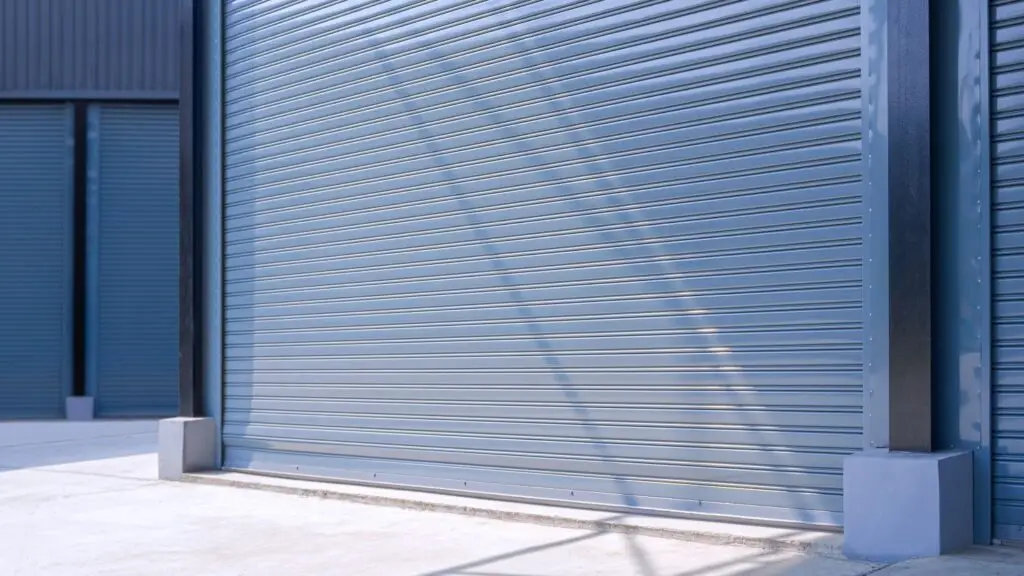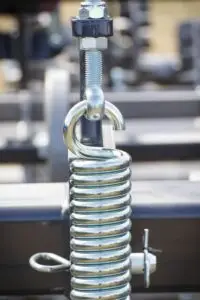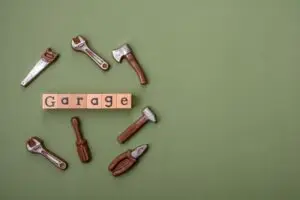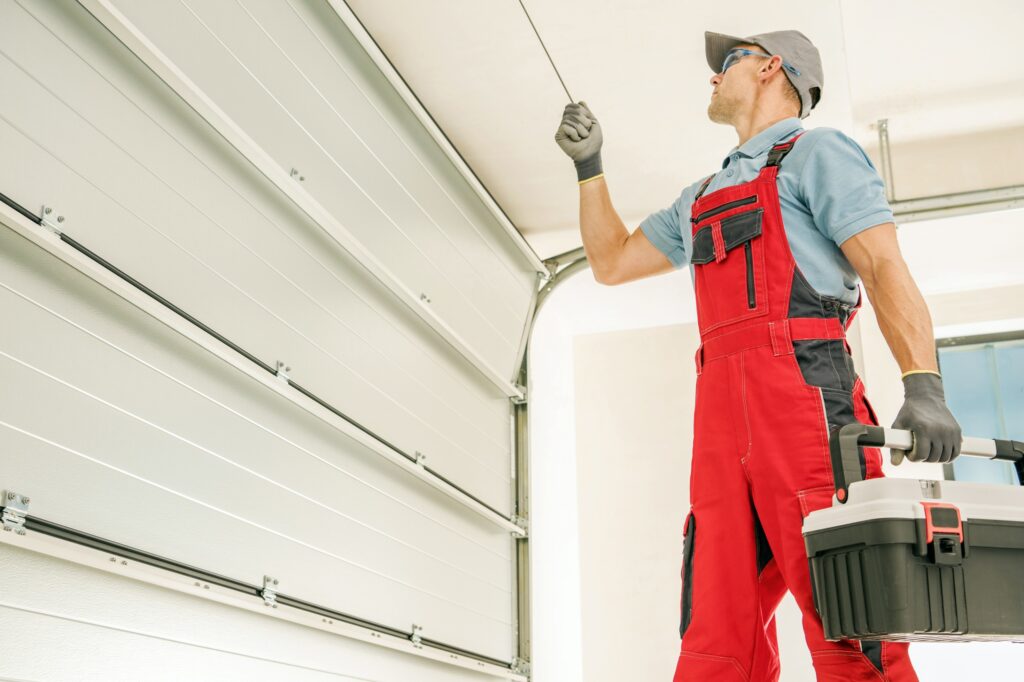Let’s be honest—garage doors don’t exactly scream “high maintenance.” But hidden behind that convenient up-and-down motion is a set of springs doing the real heavy lifting. If you’ve ever had a door slam shut unexpectedly or refuse to budge on a busy Monday morning, your springs may be past their prime.
That’s where garage door spring repair comes in. And in a city like Katy—where suburban life means frequent commutes, carpool pickups, and weekend errands—spring cycle counts matter more than most people realize.
At Houston Garage Door Repair, we help Katy homeowners understand not just when to fix a spring but why it matters—and how to avoid unexpected repairs with just a bit of knowledge and planning. So, let’s dive into spring cycles, lifespan expectations, and everything in between.
What Exactly Is a Garage Door Spring Cycle?
Think of a spring cycle as a single open and close motion of your garage door. One up, one down. That’s one cycle. Now imagine doing that four times a day (going to work, returning, school runs, etc.). That’s around 1,500 cycles per year—and that’s being conservative.
Most torsion springs (the kind mounted above your garage door) are rated for 10,000 cycles. That might sound like a lot—until you realize that’s just 6–7 years of average use in a typical Katy household.
Types of Garage Springs and Their Life Expectancy
Understanding which type of spring you have is crucial for estimating its lifespan.
1. Torsion Springs
These are the sturdy coils mounted above the garage door. They’re durable, efficient, and most common in modern setups.
- Standard life: ~10,000 cycles
- Heavy-duty option: Up to 20,000+ cycles with upgraded materials
- Best for: High-usage households and double-door garages
2. Extension Springs
These run along the horizontal tracks on either side of the door. They’re often found in older or budget-friendly garage systems.
- Standard life: ~5,000–10,000 cycles
- Drawback: More prone to uneven wear and sudden failure
Spring Life in Katy: Why Local Conditions Matter

Now, here’s where it gets interesting. Katy’s hot, humid climate and frequent garage usage patterns play a significant role in spring wear and tear.
- Frequent use: Katy families often rely on their garages as a main entrance, which means more daily cycles.
- Climate stress: Moisture and heat can cause spring fatigue signs like rust, metal weakening, or lubricant breakdown.
- Garage storage: Storing temperature-sensitive items? You probably open the garage more often—adding even more strain.
So while 10,000 cycles may be the “standard,” many Katy springs give out around the 6–8-year mark, especially without routine checks.
Signs Your Springs Are Nearing the End
You don’t need to wait for a snap to know something’s wrong. Watch for these early indicators:
1. The Door Feels Heavy
If your opener strains or your door feels heavier than usual to lift manually, your springs may be losing tension.
2. The Door Won’t Stay Open
That’s a classic symptom of spring wear and tear. When the springs can’t counterbalance the door, gravity wins.
3. Uneven Movement
Watch for one side rising faster than the other or jerky, inconsistent motion. That’s often due to extension springs wearing unevenly or one torsion spring giving out early.
4. Loud Bang or Pop
Yes, a spring can break with a loud crack, especially in Katy’s heat. If you hear it, do not attempt to lift the door. Call a pro.
The Dangers of Pushing Worn-Out Springs
Worn or broken springs aren’t just an inconvenience—they’re a safety risk. Here’s why:
- Spring snapping dangers: When a spring fails under tension, it can whip out with enough force to cause serious injury.
- Opener overload: A spring failure forces your opener to do more work than it’s built for, risking expensive motor burnout.
- Uneven wear: Using the door with one broken spring puts pressure on the other—leading to a second failure.
That’s why preventive spring replacement is way smarter than waiting for the inevitable.
How to Test Spring Health at Home
Want to do a quick spring cycle testing at home? Try this simple balance test:
The Balance Check
- Disconnect the garage door opener.
- Manually lift the door halfway and let go.
- If it stays in place, your springs are balanced.
- If it falls or shoots up, your springs are losing their tension.
⚠️ Important: Only perform this if you’re confident handling your door manually. If it feels too heavy or unstable, skip the test and call a pro.
Pro Tips to Extend Spring Life in Katy
We can’t stop time, but we can slow wear and tear. Try these spring-saving strategies:
✅ Lubricate Regularly
A silicone-based lubricant applied every 3–4 months keeps coils moving smoothly and prevents lubricant freezing in winter.
✅ Use the Door Mindfully
Try reducing unnecessary opens (especially during hot afternoons when the metal expands and wears faster).
✅ Upgrade to High-Cycle Springs
If you’re replacing anyway, why not future-proof your setup?
Got Multiple Springs? Replace Both!
Here’s a money-saving tip that might feel counterintuitive: if one spring breaks, replace both. Why? Because the second spring is likely the same age and has gone through the same cycle count.
Replacing both at once:
- Ensures balanced tension
- Prevents near-future breakdowns
- Avoids another service fee down the line
It’s a small extra cost for a much bigger payoff in stability and performance.
💬 Call Before the Snap: Let’s Keep Your Door Running Smooth

Your garage springs may be small, but they pack a mighty punch—and they work hard every single day. If you’re due for a garage door spring repair or just want to check your cycle count, give us a ring. We’ll keep things smooth, safe, and on schedule in true Katy fashion.
❓ Spring Questions? We’ve Got Answers
Can you visually inspect your garage springs for wear?
Yes, but it takes a trained eye. Look for gaps in the coil, rust spots, or stretched segments—but keep in mind that many issues aren’t visible to the naked eye. We recommend a professional inspection yearly, especially if your door is 5+ years old or sees frequent use.
Are high-cycle springs worth the upgrade in Katy?
Absolutely. In a busy household where your door might open 4–6 times a day, high-cycle springs save you from future replacements and reduce the risk of emergency failures. It’s a modest investment with a long-term payoff.
Should you adjust spring tension yourself if your door feels heavy?
Nope! Spring tension adjustment is extremely dangerous without proper training and tools. It’s not just about tightening a bolt—it’s about controlling a high-tension mechanism that can cause injury if mishandled. Leave this one to the pros.
👉 Want Your Whole System in Sync?
Now that you know how to keep your springs in shape, it’s time to look at the bigger picture. Check out our next blog:
“How Garage Door Spring Repairs Fit Into Your Annual Katy Home Maintenance Plan“
We’ll show you how spring care ties into smart seasonal upkeep—and how to make sure everything in your garage is working together like a well-oiled machine.






